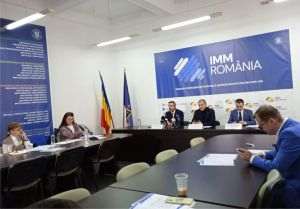The harmonization of railway regulations in the member states of the European Union is slow and inconsistent, which leads to incompatibilities that prevent the use of the railway, states the European Railway Agency (ERA), following a report drawn up on the interconnectivity of railways at European level.
The report shows that European countries built their own railway networks and chose equipment and standards that were incompatible with the trains and tracks of their neighbours, and as a result the continent's rail network is now disjointed and fragmented.
Officials at the Brussels-based European agency are trying to change this and are developing "technical specifications for interoperability" (TSIs), i.e. harmonized rules which, once implemented, are meant to ensure uninterrupted cross-border traffic in the European rail system. However, their implementation is slow and inconsistent. Often they are not implemented at all because Member States repeatedly submit requests for exceptions to the European Commission.
Josef Doppelbauer, Director General of the European Railway Agency, said at the presentation of the report: "One of the major problems regarding rail interconnection is the existing fragmentation within national systems, fragmentation which leads to a reduction in cross-border rail traffic."
Interconnectivity problems are to be solved by generalizing the implementation of the European Rail Traffic Management System (ERTMS), which introduces a unified signaling and speed monitoring system, an essential element for the interoperability of rail transport in the EU.
Enno Wiebe, the general director of UNIFE - the association of railway manufacturers and suppliers, said, quoted by Euractiv.de: "To create a safer, more economical and interoperable network, we must immediately prioritize the harmonization of the operating rules of the System European Rail Traffic Management and we will work closely with ERA to achieve this".
The European Railway Agency's report found that the implementation of this system is progressing slowly and unevenly between member states. The train control system is used on around 13,700 kilometers of railway lines in the EU, although it should be operational in 2030 on 57,000 kilometers of major European rail corridors. The report cited high costs as the main reason for the delay. It is also costly for UNIFE not to implement the system.
Enno Wiebe explained to the quoted source: "In research published earlier this year, we found that too many differences in the operation of the European rail traffic management system and in the technology used from one country to another have an impact on transport costs" .
The European Union has simplified national regulations in other areas of the railway sector, including the procedures for registering locomotives and wagons, which have been significantly reduced. Recent reforms allow train manufacturers to apply for a single approval from the European Railway Agency, allowing them to operate their locomotive or wagon in all 27 EU countries. According to data from the report, the majority of authorizations in 2023 were related to wagons, followed by locomotives and train sets, while more than 1,550 authorizations (for more than 19,600 authorized vehicles) covered an area of use in several countries. The average time to obtain a vehicle type authorization has fallen significantly over time, fluctuating from August 2022 (and for the whole of 2023) well below the target of 5 working days. With the exception of complex authorization cases (eg locomotives running in several Member States, involving Control, Command and Signaling - CCS), the average time for issuing authorizations has decreased.
























































